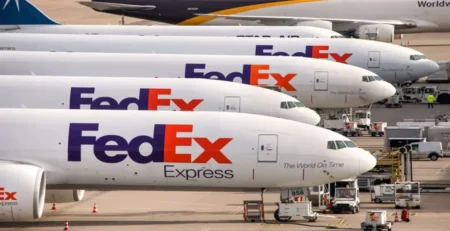5G Quietly Reshapes Operations at Thames Freeport: A Turning Point for UK Logistics

By Maria Kalamatas – June 25, 2025
Section: /maritime
Location: Essex, United Kingdom
ESSEX – There was no ribbon-cutting ceremony. No flashy headline. But something changed at the Thames Freeport this week that may quietly redefine how British ports operate.
On Wednesday morning, DP World confirmed that its London Gateway terminal, along with the Port of Tilbury and Ford’s site in Dagenham, are now running on a fully deployed private 5G network—the first of its kind in UK port logistics.
“This isn’t about faster internet,” said Alan Whittaker, on-site systems engineer. “It’s about creating a secure, real-time conversation between cranes, trucks, sensors, and control rooms.”
Instant feedback, smarter movement
The new network allows machinery, containers, and control systems to communicate without delay. Autonomous vehicles can adjust their routes in real time. Warehouse teams can track assets with pinpoint accuracy. And engineers receive predictive maintenance alerts before breakdowns occur.
Operators report a sharp reduction in response time between logistics events—what used to take minutes via Wi-Fi or manual input now happens in under a second.
“It changes how we work,” said Rachel Dunne, a logistics coordinator at Tilbury. “Less paperwork, fewer delays, and better safety.”
Local data, local control
One key feature of the system is that it’s completely independent of public networks. All data is stored locally, encrypted end-to-end, and remains on sovereign UK infrastructure. The network doesn’t use public 5G bands, making it resistant to overload and external interference.
John Everley, the Freeport’s development lead, says it’s a critical shift:
“Ports are no longer just steel and concrete. They’re digital infrastructure, and the security of that layer is just as important as physical gates and fences.”
Environmental and economic returns
Initial projections suggest the 5G rollout could reduce port-related CO₂ emissions by at least 15% within 12 months, thanks to fewer idle vehicles and more efficient vessel turnaround. Reduced bottlenecks mean trucks spend less time on-site, and shipping schedules face fewer disruptions.
Long term, the Freeport aims to integrate this technology with AI-driven supply chain visibility tools, opening the door to real-time collaboration with inland terminals and retail distribution centers.
Conclusion
While the global shipping industry often focuses on container volume or vessel size, the story at Thames Freeport is about intelligence, not scale. In an industry where every second counts, the ability to move faster—because your systems are already talking—is the kind of change that doesn’t make noise, but makes history.
The post 5G Quietly Reshapes Operations at Thames Freeport: A Turning Point for UK Logistics appeared first on The Logistic News.
Share this post
Related
Posts
Adani Warns of Middle East Conflict Threatening Global Supply Chain Stability
By Maria Kalamatas – June 26, 2025Location: Ahmedabad, IndiaSection: /world AHMEDABAD – During a measured yet firm address at the Adani...
At Thames Freeport, 5G Tech Quietly Rewires the Way Ports Work
By Maria Kalamatas – June 26, 2025Location: Essex, United KingdomSection: /maritime ESSEX – There was no breaking news alert. No splashy...
FedEx Warns of Weakened Demand as Trade Tensions Take Toll
By Maria Kalamatas – June 26, 2025Location: Memphis, USASection: /air MEMPHIS – FedEx’s stock tumbled early Wednesday after the logistics giant...
5G Quietly Reshapes Operations at Thames Freeport: A Turning Point for UK Logistics
By Maria Kalamatas – June 25, 2025Section: /maritimeLocation: Essex, United Kingdom ESSEX – There was no ribbon-cutting ceremony. No flashy headline....




